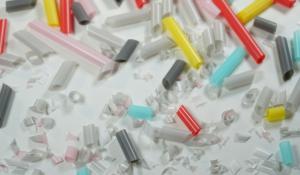
About one percent of all water on Earth is drinkable. Drinkable water plays a huge role in our daily lives, from brushing our teeth to cooking our food. The US Geological Survey reports that the average American uses between 80-100 gallons of water per day at home. However, saving drinkable water is imperative to ensure clean, accessible water for generations to come.
Try water conservation at home, and make it a part of everyday family practice. Here are some simple tips to help you reduce your water use:
13 Ways to Save Water
- Shower for five minutes: The average shower in America is eight minutes long. The EPA estimates that average shower heads use 2.5 gallons of water per minute—that’s 20 gallons of water per shower. Take three minutes off of your shower to help reduce water.
Daily savings: 7.5 gallons
- Drive less: It takes about ¾ of a gallon of water to refine and transport the gas used to drive one mile. The average person drives 37 miles per day. You can walk to a place you normally drive, or carpool instead of taking two cars.
Daily savings: About 1.5 gallons walking two miles instead of driving.
- Insulate your hot water pipes: You will get hot water faster, while avoiding wasting water while it heats up. If a heating contractor installs the insulation, expect to pay labor costs of about $2.50 per foot for small size pipe to about $4 for larger pipe. If you would like to install it yourself, stores like Home Depot sell foam insulation for about $2 per 6 feet. Daily savings: 2.5 gallons running the shower for one minute before getting in.
- Clean walkways with a broom: Use a broom instead of hosing off outdoor walkways. You’ll save about 30 gallons for every five minutes you don’t use the hose. The average homeowners can save more than 3,000 gallons a year by sweeping and not by washing.
Daily savings: 8 gallons.
- Install water-saving shower heads: Installing low-flow faucet aerators automatically pauses a running shower once it gets warm, until you’re ready to use it. A low-flow, water-saving shower head can reduce water usage for an average family by 2,900 gallons a year, according to the EPA. You can find these at your local hardware store, with prices ranging from $20 to $200, depending on functions and settings.
Daily savings: About 2 gallons.
- Minimize use of kitchen garbage disposal: Garbage disposals use about eight gallons of water per day. A better way to dispose fruit and vegetable scraps is to compost them for the garden. Reducing use of the garbage disposal can save 50 to 150 gallons of water per month.
Daily savings: 1.5 to 5 gallons
- Recycle indoor water and use for plants: Instead of pouring a cup of water you no longer need down the drain, give it to your plants! It saves time and water so you don’t have to use a garden hose.
- Wash full loads of dishes and laundry: These are the two appliances in your home that use the most water. Only washing with full loads of dishes or laundry saves 15-45 gallons of water in the washer, and 5-15 gallons of water in the dishwater.
Daily savings: 7-21 gallons (assumes daily dishwasher use, plus one load of laundry per week).
- Don’t run the water while brushing your teeth or shaving: Two to three minutes without the water on while brushing your teeth can save 2-3 gallons of water each day. Instead of having the water on while shaving, fill the bottom of the sink with a few inches of water to rinse your razor. These two adjustments can save 180 gallons per month.
Daily savings: 2-6 gallons.
- Avoid unnecessary flushing of your toilet: Throw tissues and other bathroom waste in the garbage can or compost pile, which doesn’t require gallons of water. The average person flushes five times a day, so that water use can really add up. You know what they say—if it’s yellow, let it mellow. The toilet is one of the most water-intensive fixtures in the house. Do you need to flush every time?
Daily savings: 4 to 28 gallons, depending on how old your toilet is.
- Fix leaks in your home: On average, leaks account for 14 percent of indoor water use. Leaks can go unnoticed for years, so proper inspection and maintenance of appliances can help prevent them. Your bathtub and sink could leak one drip per second, wasting more than 3,000 gallons per year. Outdoor irrigation systems can leak 1/32 of an inch in diameter, which can waste over 6,000 gallons of water annually.
Daily savings: ~24 gallons.
- Defrost frozen foods in the refrigerator instead of with water: Defrosting food in the fridge keeps it at a safe temperature, as opposed to having it sit in warm water, where harmful bacteria can grow. Plan ahead by placing frozen foods for the next day in the refrigerator overnight, which could save 50 to 150 gallons of water a month.
Daily savings: 1.5 to 5 gallons.
- Choose tap water over bottled water: It takes about 1.5 gallons of water to manufacture a plastic bottle, which are almost always made from new plastic.
Daily savings: 6 gallons (assumes recommended daily water intake of eight eight-ounce glasses).
And one More: Food choices
Agriculture accounts for 92 percent of global water consumption. There are three main ways to save and protect clean water through your food choices: waste less food, eat less meat, and choose food grown organically—preferably through regenerative carbon-farming practices.
Food waste: Americans waste 40 percent of the food we grow. Worldwide, we waste 1.3 billion tons of food, which also wastes 24 percent of the water used for agriculture, or more than 45.7 trillion gallons of water, according to the World Resources Institute. Our Winter 2016 Green American on food waste is full of tips and resources to help you waste less food.
Eat less meat: Pound for pound, raising meat requires a lot more water than growing grains and produce, according to the GRACE Foundation. For example, a pound of beef requires 1,800 gallons of water, while a pound of corn only requires 147 gallons. So eating less meat saves water.
Production of cattle feed is also closely tied to algae blooms, which have contaminated US water sources to the point where entire cities have had to temporarily switch to bottled water. These are caused by microcystis bacteria, which feed off of the nutrients nitrogen and phosphorous, largely from fertilizer run-off. Some strains of microcystis are toxic, threatening human health.
Dr. Don Scavia, an environmental engineering professor at the University of Michigan and former top scientist at NOAA, points to row crop, industrial-scale corn production as one of the largest driver of nutrient pollution: “About 40 percent of the corn produced in the US is used for animal feed,” he says. “So, if there was less meat consumption, the demand for corn would go down, and, therefore, less corn would be produced. It is also worth noting that another 40 percent is used for ethanol production.”
In addition, confined animal feedlot operations (CAFOs), which house most animals raised for meat in the US, contribute significantly to water pollution in the US. CAFOs in the US produce 300 million tons of waste per year, and 13 percent more manure per year than human waste production, according to the US EPA. Instead of being treated at sewage plants, that waste sits in manure lagoons or is sprayed on fields as fertilizer. The National Institutes of Health report that lagoon leaks and the use of manure as fertilizer sends pathogens, nutrient pollution, antibiotics, hormones, and heavy metals into our water systems.
Buy organic: Green America’s Center for Sustainability Solutions helps foster sustainable supply chains in the food industry, in part by encouraging more markets for organic farmers in the US. The more organic farmers, the less chemical pesticide and fertilizer run-off from the ag industry. The Center’s Carbon Farming Network also encourages farmers and businesses to adopt practices that regenerate soil. Through regenerative farming, the world could produce up to 58 percent more food, reduce water pollution, and help reverse the climate crisis, because healthy soils contain living microorganisms that break down carbon and pollutants—and healthy soils retain more water.







